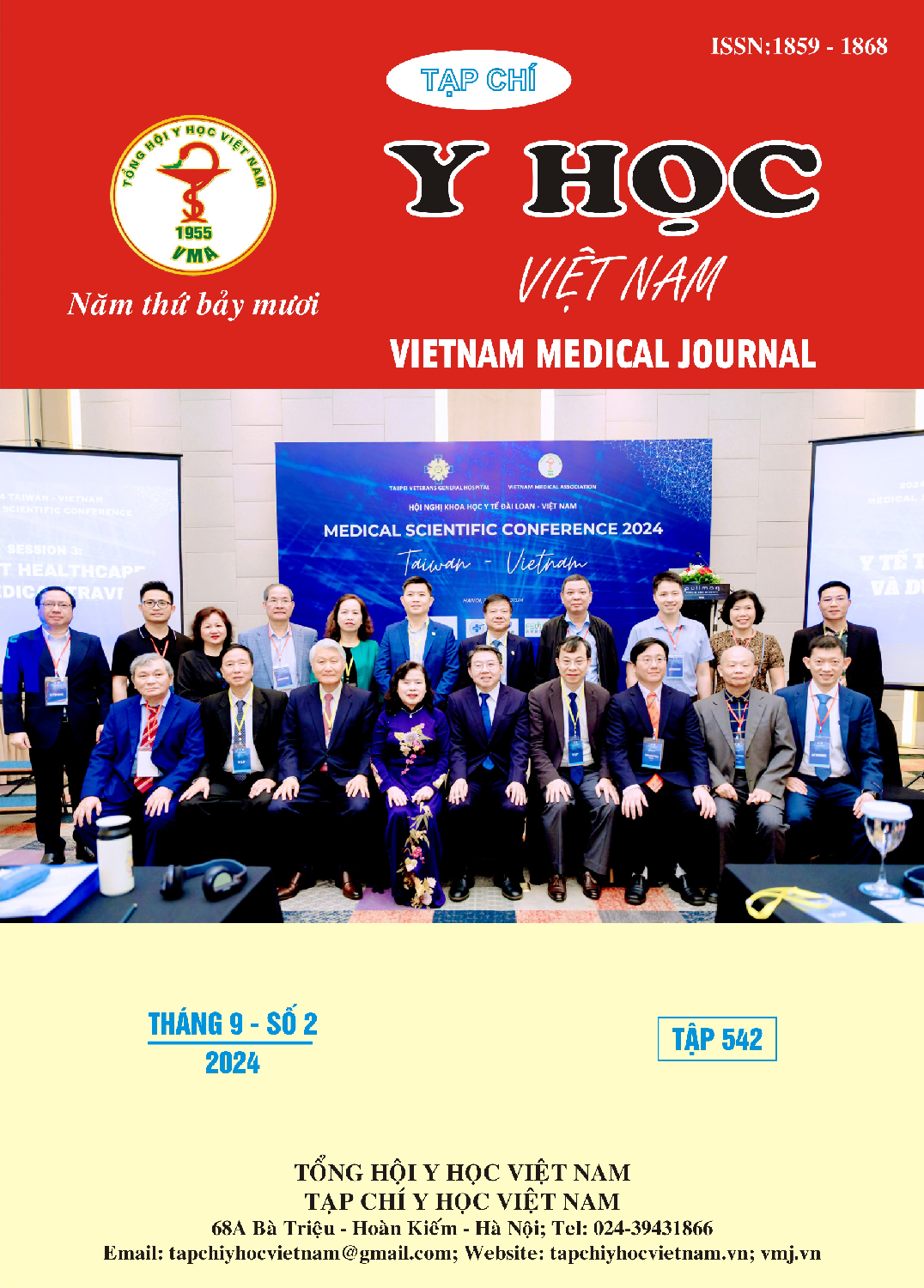DIAGNOSIS AND TREATMENT CYCLODISLYSIS AFTER OCULAR BLUNT TRAUMA
Main Article Content
Abstract
Objective: To evaluate the initial outcomes and some factors affecting the anatomical results of treatment of cyclodialysis after ocular blunt trauma. Subjects and research methods: A prospective descriptive study without a control group on 60 eyes diagnosed with cylodialysis after ocular blunt trauma treated at the Trauma department and outpatient clinic of Vietnam National Eye Hospital from 01/ 2017 to 07/2018. Results: Most patients were male, the ratio male / female was approximately 6/1. The average age was 39,0 ± 12,3, most of them were in the groups of 31 – 50 years old. The average visual acuity (VA) pre – treatment was 0.2±0.3, after 3 weeks it was 0.08±0.16 and after 3 months it was 0.05±0.08. The average intraocular pressure (IOP) pre - treatment was 14.3±4.7 mmHg. After 3 months of treatment, the average IOP was 19.9 ± 2.9 mmHg. The percentage of patients with high IOP after 3 weeks of treatment was 8.3%. The proportion of hypotony maculopathy was 36,7%. IOP and the depth of cyclodialysis cleft were inversely correlated (r=-0.4, p=0.0015). Factors affecting the anatomical outcome included initial depth of cyclodialysis cleft, initial grade of cyclodialysis, hypotony maculopathy, and pre- treatment IOP. Age, gender, time from injury to treatment and pre - treatment visual acuity had no effect on the anatomical outcome. Conclusion: Cyclodialysis is a serious injury in ocular blunt trauma. Treatment of cyclodialysis depend on the grade and associated injuries. Some factors can be used to prognosis the anatomical outcome.
Article Details
References
2. Direct cyclopexy surgery for post-traumatic cyclodialysis with persistent hypotony: ultrasound biomicroscopic evaluation - PubMed. Accessed February 17, 2022. https://pubmed.ncbi.nlm.nih.gov/25076374/
3. Yang JG, Yao GM, Li SP, Xiao-HuaWang, Ren BC. Surgical treatment for 42 patients with traumatic annular ciliochoroidal detachment. Int J Ophthalmol. 2011;4(1):81-84. doi:10.3980/j.issn.2222-3959.2011.01.19
4. Agrawal P, Shah P. Long-term outcomes following the surgical repair of traumatic cyclodialysis clefts. Eye. 2013;27(12):1347-1352. doi:10.1038/eye.2013.183
5. Dogramaci M, Erdur SK, Senturk F. Standardized Classification of Mechanical Ocular Injuries: Efficacy and Shortfalls. Beyoglu Eye J. 2021;6(3):236-242. doi:10.14744/bej.2021.01488
6. Wang C, Peng XY, You QS, et al. Internal cyclopexy for complicated traumatic cyclodialysis cleft. Acta Ophthalmol (Copenh). 2017;95(6):639-642. doi:10.1111/aos.13463
7. Popovic M, Shareef S, Mura JJ, et al. Cyclodialysis cleft repair: A multi‐centred, retrospective case series. Clin Experiment Ophthalmol. 2019;47(2):201-211. doi:10.1111/ceo.13378
8. Hwang JM, Ahn K, Kim C, Park KA, Kee C. Ultrasonic biomicroscopic evaluation of cyclodialysis before and after direct cyclopexy. Arch Ophthalmol Chic Ill 1960. 2008;126(9):1222-1225. doi:10.1001/archopht.126.9.1222
9. Kumar M, Kesarwani S. Post-traumatic cyclodialysis cleft with hypotonic maculopathy. Clin Exp Optom. 2011;94(5):481-483. doi:10.1111/j.1444-0938.2011.00599.x


